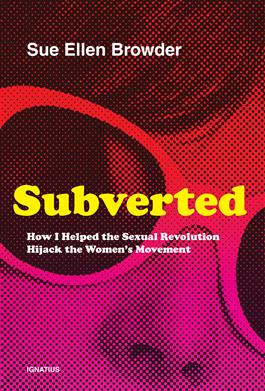By Maria Gallagher, Legislative Director
gallagher@paprolife.org
 You may have heard of Larry the Cable Guy. But do you know about Larry the abortion guy?
You may have heard of Larry the Cable Guy. But do you know about Larry the abortion guy?
In a recently released book entitled Subverted, writer Sue Ellen Browder tells her personal, emotionally riveting story of how she “helped the sexual revolution hijack the women’s movement.” Browder’s personal biography — a writer for Cosmo magazine who eventually saw the light and abandoned the darkness of the culture of death — is fascinating. But here, I want to focus on the individual who might be described as the man behind the modern pro-abortion women’s movement — Larry Lader.
According to Browder’s detailed account, Larry was an atheistic magazine writer whose first foray into the world of book publishing was an account of the life of Planned Parenthood founder Margaret Sanger. Larry was one of the founders of the National Association for the Repeal of Abortion Laws, now known as the abortion lobbying group NARAL.
Browder notes that it was due to Larry’s influence that the woman who might be called the mother of the women’s rights movement, Betty Friedan, inserted abortion into the National Organization for Women’s political platform. This turn of events came about even though Betty originally opposed legal abortion.
As Browder tells it, Larry was on a drive to Bucks County, Pennsylvania, with Dr. Bernard Nathanson (an abortionist who converted into a pro-life champion later in life) in 1967 when Larry stated, “If we’re going to move abortion out of the books and into the streets, we’re going to have to recruit the feminists.”
At a NARAL strategy meeting, Larry told Dr. Nathanson, “We’ve got to keep the women out in front. You know what I mean…and some blacks. Black women especially.”
Interestingly enough, Browder reports that Larry’s commitment to abortion formed a wedge between him and Margaret Sanger, who had called abortion “barbaric.”
Larry ultimately wrote a book on abortion, which was subtitled, “The first authoritative and documented report on the laws and practices government abortion in the U.S. and around the world, and how — for the sake of women everywhere — they can and must be reformed.” Still, as Browder writes, Larry’s book “was laced with poisonous half truth, limited truth, and truth out of context.”
And yet, Supreme Court Justice Harry Blackmunn cited Larry’s abortion book at least seven times in writing the tragic decision Roe v. Wade and its companion case, Doe v. Bolton, which brought us abortion on demand for any reason during all nine months of pregnancy.
It is impossible to solve a problem unless we know its origins. Please read Subverted to learn how abortion became the law of the land. History can be difficult to handle, but we owe it to the 58 million and counting abortion victims who have become Larry’s legacy — and to the mothers who are still grieving their children’s deaths.
